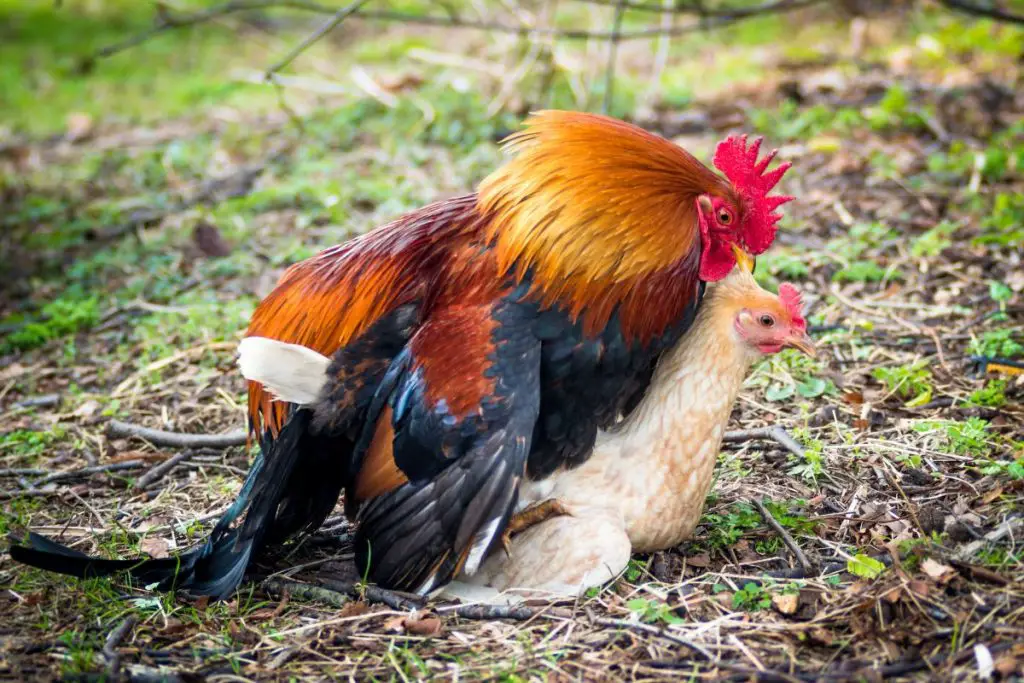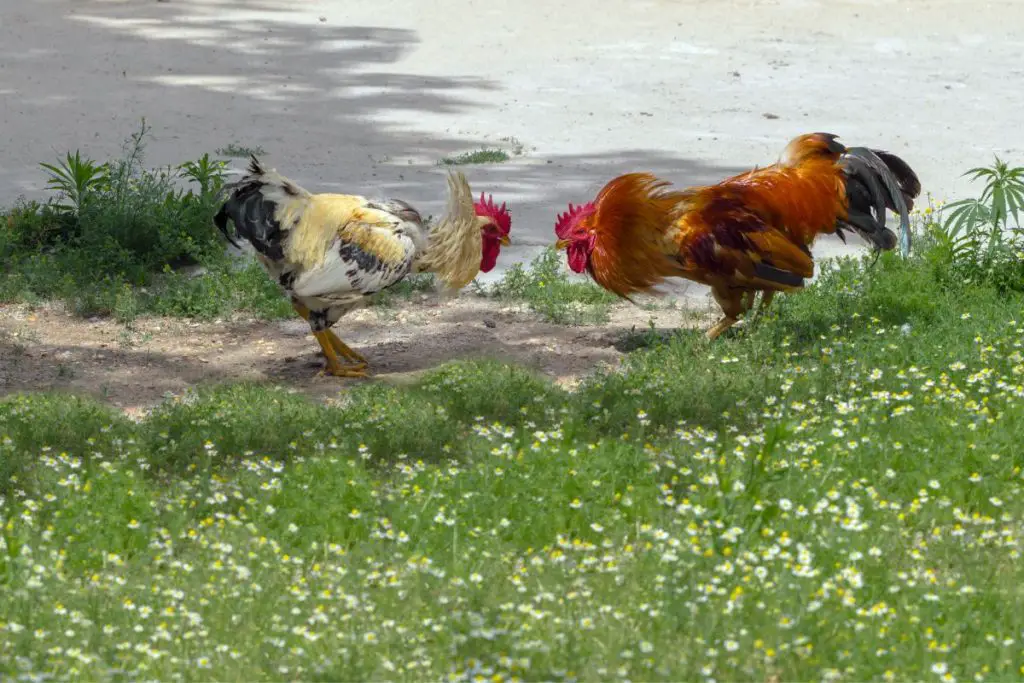Rooster Fertilization: How It Works & Tips For Farmers
Ever wondered about the secret life within a chicken egg? The presence of a rooster is the key, unlocking the potential for new life. Delving into the intricacies of how roosters fertilize chicken eggs is not just a matter of curiosity; it's fundamental for anyone involved in poultry, from the backyard enthusiast to the seasoned farmer.
Chicken reproduction is a captivating blend of biology and behavior, involving the rooster and hen in a delicate dance. Many find themselves pondering the roosters role in producing those perfectly formed eggs. This exploration will shed light on every facet of this fascinating process. Whether you are focused on eggs or raising chickens for meat, gaining a deeper understanding of this reproductive process is essential for effective and enlightened poultry practices.
| Aspect | Details |
|---|---|
| Scientific Name | Gallus gallus domesticus |
| Type of Reproduction | Sexual, involving sperm from the rooster fertilizing the hen's egg. |
| Fertilization Location | Oviduct of the hen. |
| Sperm Viability | Sperm can remain viable within the hen for approximately 10-14 days. |
| Fertilization Outcome | Results in a fertilized egg that can develop into a chick. |
| Key Components of Rooster Reproductive System | Testes (sperm production), Vas Deferens (sperm transport), Cloaca (mating opening). |
| Key Components of Hen Reproductive System | Ovary (egg production), Oviduct (egg formation and fertilization). |
| External Reference | Wikipedia - Chicken |
The importance of roosters in the fertilization of chicken eggs is central to the continuation of a flock. Without their presence, hens will lay eggs, but these eggs remain unfertilized, incapable of hatching into chicks. This article will carefully examine the specific role roosters perform in the reproduction process, essential for anyone looking to understand the full scope of poultry.
- Movie Rulez2 Com 2024 Telugu Risks Legal Alternatives
- Movie Point Mkv Your Ultimate Guide To Movies More 2024
Why Are Roosters Necessary?
Roosters are the essential providers of the male genetic material, without which the development of embryos cannot occur. During mating, roosters transfer sperm to the hen, which then journeys through the oviduct, where it then fertilizes the egg. This is the fundamental step that starts the cycle of new life.
How Roosters Contribute to Flock Dynamics
Beyond their reproductive role, roosters influence flock dynamics. They act as protectors of the hens, safeguarding them from predators, and play a vital role in maintaining order. The presence of a rooster can contribute to the general health, well-being, and overall productivity of the flock, bringing both structure and security.
The intricate dance of egg fertilization involves a series of finely tuned steps. Comprehending these steps offers deep insights into the reproductive mechanisms of poultry. It highlights the precision and coordination needed for successful reproduction.
- Oliver Simon Peter Blunt Biography Achievements And Impact
- Pauline Chan Discovering Vin Diesels Wife Their Life Together
Steps in the Fertilization Process
- Copulation: This is the act of mating, where the rooster mounts the hen, and sperm transfer occurs.
- Sperm Storage: Within the hen, specialized glands, the sperm storage tubules, are designed to store the sperm after mating.
- Egg Formation: The egg moves through the oviduct, and it is here that fertilization, if the sperm is present, takes place.
To truly appreciate the role of roosters in egg fertilization, it is vital to understand their reproductive anatomy. The components of a rooster's system are finely tuned for reproduction, allowing the successful transmission of sperm.
Key Components of the Rooster's Reproductive System
The roosters reproductive system encompasses critical components, including the testes, where sperm production occurs. The cloaca serves as the opening through which mating and sperm transfer takes place. Unlike mammals, roosters do not possess a penis. Instead, they utilize a "cloacal kiss" during mating to enable the transfer of sperm.
The reproductive anatomy of the hen is just as critical, as it plays a pivotal role in the fertilization process. The hen's body provides the environment for egg production and fertilization, making it an equal partner in this biological process.
Key Components of the Hen's Reproductive System
The hens reproductive system features the ovary, where the eggs are produced. The oviduct is where fertilization happens. During its passage through the oviduct, layers are added to the egg, forming the protective shell.
The mating process is a crucial stage in egg fertilization, and it requires the precise coordination of both rooster and hen. The steps are carefully designed to ensure the successful transfer of sperm and eventual fertilization.
Steps in the Mating Process
- Courtship: Roosters initiate this stage by performing a courtship dance, designed to attract the hen.
- Cloacal Kiss: The rooster and hen align and press their cloacas together, allowing the crucial transfer of sperm.
- Sperm Storage: Once the transfer is complete, the hens system takes over, as she stores the sperm in specialized glands for future use.
Various factors will have an impact on the success of egg fertilization. These factors can be influenced and managed, leading to a higher success rate and healthier offspring. Understanding these factors can greatly improve the results of a breeding program.
Key Factors to Consider
- Age and Health of Roosters and Hens: Young, healthy birds are generally found to have higher fertility rates.
- Diet and Nutrition: Proper nutrition is an essential element in maintaining the optimal reproductive health for both species.
- Environmental Conditions: Stressful conditions can be detrimental to fertility and reproductive success.
Poultry farmers can implement several strategies to increase the success rate of egg fertilization. Practical tips can assist in creating a thriving flock, leading to more eggs and successful hatches.
Strategies for Improving Fertilization Rates
- Regular Health Check-Ups: Ongoing monitoring of both roosters and hens is a must.
- Proper Nutrition: Implement a well-balanced diet, including all essential nutrients to boost fertility and health.
- Optimal Living Conditions: Provide a comfortable and stress-free environment to foster the health and wellness of your flock.
Addressing common questions helps to demystify the process of fertilization and gives clarity to poultry owners. Understanding the basics will ease the process for all those involved.
Do All Eggs Laid by Hens Need to Be Fertilized?
No, not all eggs need to be fertilized. Hens can lay eggs regardless of whether a rooster is present. However, these unfertilized eggs will not develop into chicks. Only fertilized eggs have the potential to hatch.
How Long Does Sperm Stay Viable in Hens?
Sperm can remain viable within a hen for a period of up to 1014 days. This allows for the fertilization of multiple eggs from a single mating, a testament to the efficiency of the hens reproductive system.
The understanding of how roosters fertilize chicken eggs provides numerous benefits to poultry farmers and enthusiasts. By enhancing comprehension, success in poultry keeping can be greatly improved.
Improved Flock Productivity
The application of this knowledge enables farmers to optimize their breeding practices. This leads to greater productivity, healthier flocks, and improved overall results. A clear understanding leads to a more successful and sustainable operation.
- Capricorn Rising Makeup How To Get The Look
- La Mala Semilla 2018 A Mustsee Psychological Thriller Review Analysis

How Long Are Roosters Fertile For?

How Long Are Roosters Fertile For?

How to roosters fertilize chicken eggs? answeringeverything/